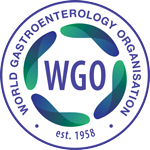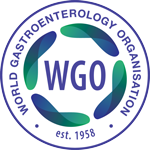Mini Guts – Human Stem-Cell Derived Organoids as Tools to Study Epithelial Properties
 |
Michael Schultz, MD
Department of Medicine
Dunedin School of Medicine
University of Otago
Dunedin, New Zealand
|
| |
|
 |
A. Grant Butt, MD
Department of Physiology
University of Otago
Dunedin, New Zealand
|
The surfaces of the body are lined by epithelia that form a barrier between the human body and the outside, the environment. This barrier is of particular importance in the gastrointestinal tract, which is the largest barrier in the body and through sophisticated mechanisms maintains a delicate homeostasis between absorption, secretion, tolerance and defense. This is especially true in the colon, and to a lesser extent the small intestine, both of which are adapted for colonization by bacteria. These bacteria have a number of beneficial effects on the host, but at the same time pose a serious threat of infection or inflammation if the intestinal barrier is compromised 1.
This intestinal epithelium forms both a physical and biochemical barrier to commensal and pathogenic microorganisms. The intestinal epithelial cells (IECs) and the dynamic network of tight junctions that connect them physically limit the entry of bacteria into the body, while the mucus and antimicrobial peptides secreted by the IECs further limit contact with the mucosal surface and translocation of bacteria by ensuring that the surface of the epithelium remains sterile. This barrier is not static and IECs respond to the luminal bacteria. This involves a range of pattern recognition receptors (PRRs), such as the toll-like receptors (TLR), NOD like receptors (NLRs) and RIG like receptors (RLRs), which sense a variety of conserved molecular patterns (PAMP, pathogen associated molecular patterns) found in both commensal and pathogenic bacteria. The result can be varied with acute changes in the amount and composition of antimicrobial peptides secreted, increased mucus secretion and modulation of the proteins in the tight junctions, all of which contribute to strengthening the barrier. In addition, the IECs participate in the co-ordination of the appropriate immune responses, ranging from tolerance to anti pathogen immunity.
In IBD, the microbiome as well as the gut-associated immune system (GALT) and the underlying genomic background has been easily assessable and therefore subject to great scientific scrutiny, leading amongst other things to the development of targeted therapies that have significantly increased and also refined treatment options for patients 2. In contrast our knowledge of the underlying pathomechanisms concerning the epithelial barrier that contribute to the development of IBD and other gut-related disorders is still patchy. This is due to a lack of individualized epithelial cell lines that would provide insight into the molecular functions on epithelial level of the 160+ susceptibility genes for IBD. In the following, we will discuss the difficulties and recent milestones that have led to the development of a novel research tool that allows the study of epithelial barrier function in the absence of confounding variables introduced by bacteria and immune cells.
The study of the human epithelium is pivotal in the understanding of processes that may lead to gut-related disorders. Recent studies indicate that dysregulation of this barrier, either through disruption of the barrier or modified host-microbial interaction, may contribute to a range of extra-intestinal autoimmune and inflammatory conditions. However, the fundamental question regarding cause or consequence of barrier dysregulation in relation to the pathogenesis of these disorders remains to be answered. Involvement of the intestinal epithelial barrier has been shown in a variety of diseases, including type I diabetes, rheumatoid arthritis and multiple sclerosis 1. In particular, the association between increased bacterial translocation and the risk of developing inflammatory bowel disease (IBD) implicates dysregulation of the intestinal epithelial barrier in either the aetiology or pathology of IBD 3.
However, mainly due to the lack of suitable tools, progress of the study of epithelial specific functions has been limited. Considerable advances in determining the role of intestinal bacteria in IBD have been achieved by using germfree and genetically modified animal models (e.g. IL-10-/- mice 4), but these only partially mirror the complex human physiology. Furthermore, identification of epithelial specific functions in these models is complicated by the influence of local and systemic immune signals. Alternatively immortalized cell lines do not recapitulate the complexity of the intestinal epithelium, which consists of multiple cell types, including enterocytes, goblet cells, enteroendocrine cells and, in the small intestine, Paneth cells. In an attempt to resolve this, multiple attempts have been made to develop primary cultures of the intestinal epithelium, but few have gained wide acceptance mainly due to a low yield of viable cells, short-term survival, limited variety of cell types present and other technical difficulties 5.
This changed in 2009, when Sato et al. published the first example of ex vivo long-term growth and maintenance of the intestinal epithelium 6. This epithelium was grown from stem cells located in the base of the small intestinal epithelial crypts of mice. The growth and survival of the epithelium was dependent on suspension of the cells in laminin-rich Matrigel and inclusion of a range of growth factors, such as Wnt, R-spondin 1, Noggin, in the media. This resulted in the growth of organoids, three-dimensional structures in which a single layer of epithelial cells surrounds a lumen 6. Within the epithelium all major cell types of the small intestinal epithelium were present and they were maintained over multiple passages similar to commercially available cell lines, e.g. CaCo2 cells, without losing their tissue identity or genomic integrity. As often when new techniques are developed, the multitude of recent publications resulted in a significant variation of names and descriptions of these structures. The NIH Intestinal Stem Cell Consortium, therefore, proposed a systematic nomenclature to enable comparison between publications 7. We and others are now able to grow organoids from most intestinal epithelial tissues from mouse and humans 8, 9. These organoids (gastroids, colonoids, etc.) allow us to study not only the developmental stages of the intestinal epithelium in the presence/absence of microbiological stimuli, but also the role of physical and biochemical components of the epithelial barrier and the involvement of the epithelium in the generation of an appropriate immune response to the commensal and pathogenic bacteria in the absence of confounding variables introduced by immune cells.
Using this approach Wilson et al. recently showed that, irrespective of NOD2 status, α-defensins contribute to the restriction of growth of multiple strains of non-invasive Salmonella enterica serovar Typhimurium following microinjection into the lumen of mouse small intestinal organoids 10. This is interesting as NOD2 mutations in Crohn’s disease have been linked to reduced α-defensin expression and function 11, a view that is lately disputed 12. Strain-specific virulence factors and host responses are thought to be responsible for the development of gastric cancers in some patients infected with Helicobacter pylori. Luminal microinjection into mouse gastroids was used to investigate the role of the oncogene CagA expressed by H. pylori in cancer development 13. The authors were able to clarify a number of suspected mechanisms in cancer development. CagA positive H. pylori infections leads to enhanced cell proliferation due to β-catenin activation, but also of note was that infected gastroids showed a reduced expression of caludin-7, which has previously been implicated in carcinogenesis 14. It is now also possible to grow cancer derived organoids to study fundamental cancer biology and also apply these, for instance, to drug screenings 15.
A glimpse into how these organoids could be used for treatment of patients with intestinal disorders was provided by Li and Clevers with the successful transplantation of expanded colonic organoids into the colon of DSS-treated mice. The organoids were tracked using RFP (red fluorescent protein) technology and seemed to have been integrated into the existing mucosa to heal mucosal lesions 16.
The development of stem cell derived organoids has provided us with a new tool to study the intestinal epithelium. Initial studies focused on developmental questions in relation to the epithelial barrier formation in the absence of confounding variables coming from the intestinal microbiome and the immune system. This led to significant advances in stem-cell research. However, researchers already are starting to reassemble the gut with the introduction of individual microorganisms into the lumen of these mini-guts to study host-microbe interactions. An advantage is the possibility to link the findings to the specific genetic background of the host. This is of considerable importance in IBD where genes associated with at least 163 specific loci contribute to susceptibility, with the function of most only partially understood. In the future it will be possible to study, not only all three components, the immune system, the epithelial barrier and the microbiome simultaneously of pathomechanistic processes, but also to screen patients for different therapeutic modalities.
References
- Fasano, A., Shea-Donohue, T. Mechanisms of disease: the role of intestinal barrier function in the pathogenesis of gastrointestinal autoimmune diseases. Nature Clinical Practice. 2005;2(9):416-22.
- Levesque, G. B, Sandborn, J. W, Ruel, J., et al. Converging Goals of Treatment for Inflammatory Bowel Disease, from Clinical Trials and Practice. Gastroenterology. 2014.
- Pastorelli, L., Salvo D, C., Mercado, R. J, et al. Central role of the gut epithelial barrier in the pathogenesis of chronic intestinal inflammation: lessons learned from animal models and human genetics. Frontiers in Immunology. 2013;4:280.
- Schultz, M., Veltkamp, C., Dieleman, A. L, et al. Lactobacillus plantarum 299v in treatment and prevention of spontaneous colitis in IL-10-deficient mice. Inflammatory Bowel Disease. 2002;8:71-80.
- Grossmann, J., Walther, K., Artinger, M., et al. Progress on isolation and short-term ex-vivo culture of highly purified non-apoptotic human intestinal epithelial cells (IEC). European Journal of Cell Biology. 2003;82(5):262-70.
- Sato, T., Vries, G. R, Snippert, J. H, et al. Single Lgr5 stem cells build crypt-villus structures in vitro without a mesenchymal niche. Nature. 2009;459(7244):262-5.
- Stelzner, M., Helmrath, M., Dunn, C. J, et al. A nomenclature for intestinal in vitro cultures. American Journal of Physiolology. 2012;302(12):G1359-63.
- Barker, N., Huch, M., Kujala, P., et al. Lgr5(+ve) stem cells drive selfrenewal in the stomach and build long-lived gastric units in vitro. Cell stem Cell. 2010;6(1):25-36.
- Sato, T., Stange, E. D, Ferrante, M., et al. Long-term expansion of epithelial organoids from human colon, adenoma, adenocarcinoma, and Barrett’s epithelium. Gastroenterology. 2011;141(5):1762-72.
- Wilson, S. S, Tocchi, A., Holly, K. M, et al. A small intestinal organoid model of non-invasive enteric pathogen-epithelial cell interactions. Mucosal Immunology. 2014.
- Wehkamp, J., Salzman, H. N, Porter, E., et al. Reduced Paneth cell alpha-defensins in ileal Crohn’s disease. Proceedings of the National Academy of Sciences U S A. 2005;102(50):18129-34.
- Shanahan, T. M, Carroll, M. I, Grossniklaus, E., et al. Mouse Paneth cell antimicrobial function is independent of Nod2. Gut. 2014;63(6):903-10.
- Wroblewski, E. L, Piazuelo, B. M, Chaturvedi, R., et al. Helicobacter pylori targets cancer-associated apical-junctional constituents in gastroids and gastric epithelial cells. Gut. 2014.
- Tsukashita, S., Kushima, R., Bamba, M., et al. Beta-catenin expression in intramucosal neoplastic lesions of the stomach. Comparative analysis of adenoma/dysplasia, adenocarcinoma and signet-ring cell carcinoma. Oncology. 2003;64(3):251-8.
- Sachs, N., Clevers, H. Organoid cultures for the analysis of cancer phenotypes. Current Opinion in Genetics & Development. 2014;24:68-73.
- Li, S. V, Clevers, H. In vitro expansion and transplantation of intestinal crypt stem cells. Gastroenterology. 2012;143(1):30-4.



